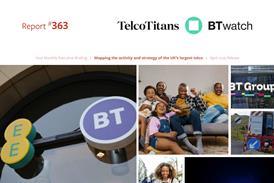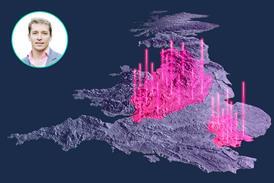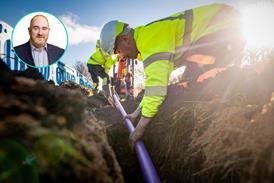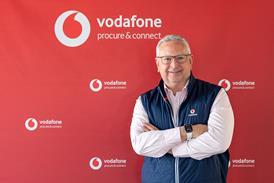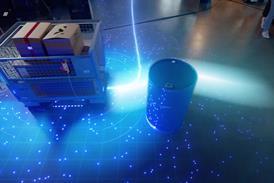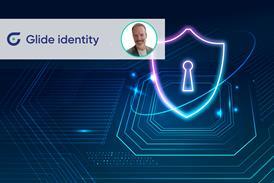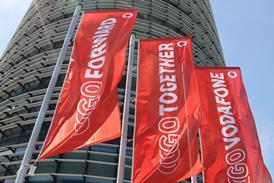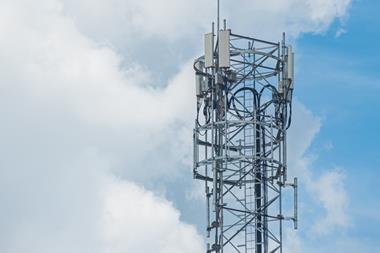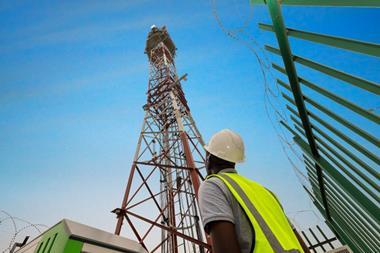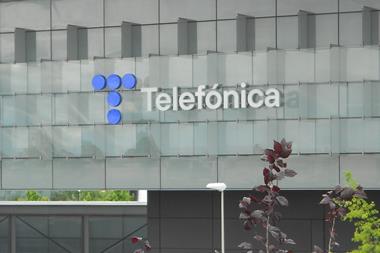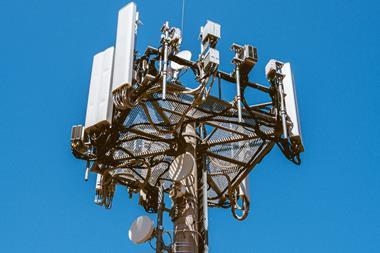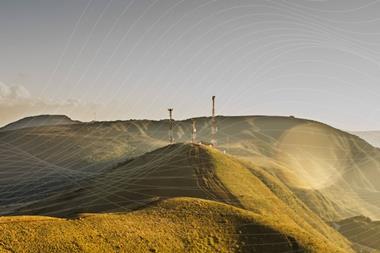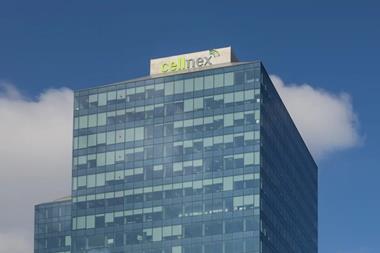Itai Karelic, CRO of AI‑powered asset digitisation solutions provider vHive, is calling upon MNOs to step up and shape their future as catalysts of the digital revolution. By becoming true agents of change and taking decisive steps to leverage the benefits of digital twin solutions across their tower estates, he says MNOs can finally unlock the promise of network performance and operational efficiency.

Becoming catalysts of digital revolution

In an era where technological evolution is not just a possibility but a necessity, mobile network operators have a generational opportunity to lead and shape their future.
The transformation already witnessed in the telecoms sector, particularly among tower companies, exemplifies the vast potential of digitisation in maximising physical asset value and opening up new revenue opportunities through advanced tools like AI analytics and precise data capture.
But here’s the million-dollar question for MNOs: it’s not about if or when you’ll adapt to changes, but are you ready to be at the forefront, leading them?
This leadership is particularly essential in the realm of data accuracy, where the gap between current practices and the potential of digital solutions such as vHive’s digital twin technology, is vast.
Accurate data is not just beneficial; it’s a fundamental necessity for MNOs to reach their objectives.
The challenges facing MNOs in the 5G era are great.
The pressing need to reduce operating costs while rapidly expanding networks to meet the insatiable demand for 5G connectivity is coupled with the critical mission to ensure network performance remains at its peak to deliver uninterrupted service to millions of subscribers who rely on robust and resilient networks.
Yet, let’s face it: the painful reality in the field for MNOs can still be entrenched in manual, inaccurate documentation of installed equipment, causing a major constraint on network coverage and scalability.
When the network is not optimised, customer satisfaction decreases, which materialises as lower ARPU and churn, and obliges the MNO to invest far more into customer acquisition.
Just how crucial is accurate data for MNOs?
At vHive, we see manual and inaccurate documentation leading to significant systematic issues in network coverage and scalability.
Here are just a few examples from our experience in the field:
- Deviation by general contractors: often, there’s discrepancy between the construction of site layout as planned by radio‑frequency (RF) engineers, and the actual implementation by general contractors (the intermediaries responsible for managing the site).
- Undocumented on-site adjustments: beyond installation, general contractors frequently adjust site equipment without updating the documentation, leading to significant data discrepancies.
- Reporting inaccuracies: we’ve even seen instances where engineers have instructed construction teams to record inaccurate data from the field to align with existing paperwork, rather than capture the actual data — such as reporting incorrect RAD centre heights.
The detrimental impact of these systematic practices on accuracy of RF design and overall network performance is significant, highlighting the need for accurate data and process optimisation.
It is also important to appreciate that manual processes by their nature can introduce inaccuracies (at best) and intentional bias (at worst). However, leaders’ focus should not be on apportioning blame but on recognising the landscape is constantly evolving and reacting to it.
As MNOs strive to offer reliable coverage, addressing these data accuracy challenges presents an opportunity to transition from relying on traditional, often inaccurate “close-out reports” to using precise digital data. This shift can significantly enhance coverage and support RF optimisation.
One example that tells it all
Case study: when records and reality clash, it is networks (and MNOs) that pay the price
The implications of inaccurate documentation practices can culminate in stark discrepancies in the data, a reality vHive recently encountered to a significant extent with a leading US MNO. vHive’s comprehensive survey of a tower site for the MNO unearthed startling inconsistencies, with digital twin analytics proving the on-ground reality sharply diverged from what the detailed site report and original construction drawings indicated.
The deviations were not minor. For example, the direction in which antennas were pointed varied by more than a 100-degrees from their planned positions — a monumental misalignment. If that wasn’t enough, antenna positioning raised further red flags: some antennas within the same sector were oriented in completely different directions — a critical error severely impacting network coverage. The discrepancies extended to antenna inventory as well, which further compounded the issue.
These aren’t mere oversights but significant lapses that can have far-reaching implications on network performance and reliability. This incident isn’t just an isolated example either: it shines a spotlight on a broader, systemic issue plaguing the industry and highlights the pressing need for a paradigm shift in how data is handled, moving away from outdated methods, to embrace more accurate digital solutions that can safeguard against such costly and critical errors.
Revenue implications and the “so what?” for MNOs
From a revenue loss perspective, the impacts of inaccurate data are profound.
Consider the quality assurance aspect. When a site gets approved for construction, the labour is contracted out. General contractors then give their MNO customers approximately three months to inspect the structure and the quality of build before signing off on it and payment released.
The issue begins with the MNOs not being able to go out and properly inspect all their new builds, and their lack a way to accurately measure the antenna poses without climbing the towers. Our solution would determine immediately after completion whether the build is to spec or requires corrections while inside the warranty period, potentially saving substantial resources.
Truck rolls are another significant cost.
Imagine a site not built to spec (which, as we’ve seen, is often the case). The MNO is seeing a drop in network coverage but does not have a clue where the source of the problem is. So, they deploy technicians to a massive area and continuously inspect, tower-by-tower, inside a said radius.
Truck rolls could be reduced by having a post-construction digital twin serving as a pre-construction baseline for the next upgrade. Instead of sending technicians in trucks to perform scoping one‑to‑four times per upgrade job, everyone can analyse the digital twin.
The critical role of AI
vHive’s use of AI when assessing tower infrastructure is focused on automatically identifying antennas and assigning their poses accurately (everything from azimuth, tilt, skew, etc.).
This integration of AI technology not only improves documentation, reporting, and error detection, but also elevates the efficiency and accuracy of the entire process.
The AI-powered analytics ensure precise billing processes between MNOs and tower companies with vHive’s Digital Twin Platform serving as the single source of truth, minimising discrepancies and streamlining financial transactions.
Digital twins: a game-changer for MNOs
What MNOs desperately need to meet their ambitious goals is data verification and error reduction, to ensure all installations match requirements — in reality, not just on paper — while enforcing general contractor accountability.
Advanced digital twin technology, such as vHive’s end-to-end digitisation solution, can deliver this for MNOs through a suite of capabilities that deliver the following:
- Optimised network coverage: MNOs can capture RAD level and compound data autonomously, enhance equipment layout on the tower with AI-powered analytics, and gain precise inventory analysis.
- Shortened time to insights: empowered by powerful analytical and visualisation tools, MNOs can unlock faster decision‑making and significantly reduce time to valuable insights with a fully automated workflow for the swift retrieval and immediate actioning of digital field data.
- Faster and simpler co-location processes: intuitive and collaborative tower simulation software can streamline equipment installation and approval, easing sharing and multi-stakeholder planning. MNOs can also easily monitor site installations, comparing as-built with as-planned.
- Accelerated 5G expansion: vHive’s simulation environment can be leveraged to customise and optimise equipment on the tower, with “multi‑versioning” supporting flexible planning and collaborative work with TowerCo partners.
- Lower costs: effective digital twin technology can reduce operational expenses by enabling autonomous tower surveys that replace site visits and deliver streamlined workflows on a single digital platform instead of in traditional PDFs.
- Accurate billing: with vHive’s digital twin platform serving as the single source of truth, precise billing processes can be implemented between MNOs and tower companies, minimising discrepancies and simplifying financial transactions.
Overcoming resistance to change
From our experience, the potential impact of digitising current practices can pose a threat to people’s confidence and create worry for job security. As in every industry, people are afraid that digitisation processes will not only change familiar ways of doing things, but also expose mistakes, reveal human weaknesses, and make them redundant.
And that’s perfectly understandable. Change is difficult. However, when we help MNOs digitise their processes, the goal is not to expose mistakes but to improve processes.
Digitisation, in essence, is a collaborative effort to enhance performance. Making processes more efficient and accurate can in reality often bring individual gains, helping team members reach personal goals and enable them to become change agents in their organisations.
From our experience, it is often the people who were initially resistant to change that ultimately turn fear of change into excitement. They are usually the individuals who become the agents of the digital culture in their organisations, pushing for better results across the board, becoming advocates of data accuracy, consistency and informed decision-making.
Besides, it’s inevitable.
When the digital revolution comes knocking at your door, it usually won’t leave. There’s no use fighting it, and no possible reason to.
Processes will become digital. Decision making will rely on accurate, real-time data from the field. Equipment installation will be optimised to allow for the best possible network coverage.
This in turn will lead to faster and more efficient 5G rollouts, shortened time to insights, and cost savings.
The ultimate result of this change will be better performance, stronger cross-department collaboration, and simpler everyday processes for individuals, because that is, ultimately, what digital transformation is all about.
And so, the question is: are you going to be the change agent in your organisation?
vHive profile
vHive is a leader in digital twin software solutions, accelerating enterprises’ continuous digital transformation through data-driven decision-making. Its cutting-edge software enables clients to deploy autonomous drone hives to digitise field assets and operations. With a strong focus on uncovering new revenue opportunities, dramatically reducing operational costs, and enhancing employee safety, vHive is making a significant impact across multiple industries, including the telecoms sector.
With a dedicated digitisation software platform, vHive’s solution can orchestrate digital assessment of a broad range of tower types in a variety of locations. By combining drone-powered Auto-Discovery technology, advanced AI analytics and intuitive 3D simulation software, vHive not only helps MNOs optimise their equipment layout on the tower, but also simplifies and expedites installation processes, saving valuable time and resources. Key benefits for tower operators are said to typically include a 40% increase in surveying capacity, a 60%+ reduction in time spent in both the field and office on securing and assessing data, and a dramatic increase in employee safety — in addition to revenue-generating benefits.
The ability to capture, analyse, plan and act on timely and accurate data, rather than relying on outdated information, siloed across systems, is a game-changer for tower operators and MNOs.

Founded in 2016, vHive is a global player with operations across five continents and over 40 countries, and has raised $36.5m in funding. Learn more at www.vHive.ai.





